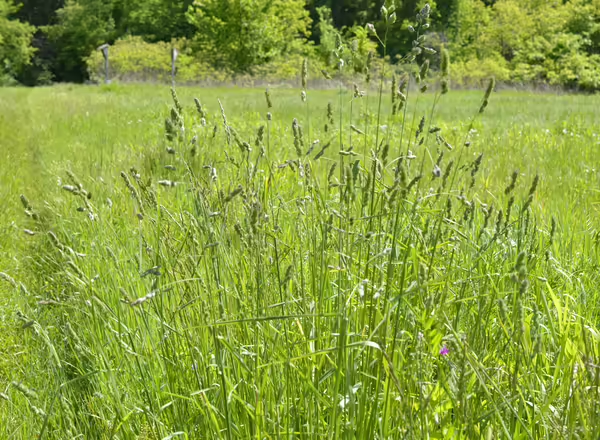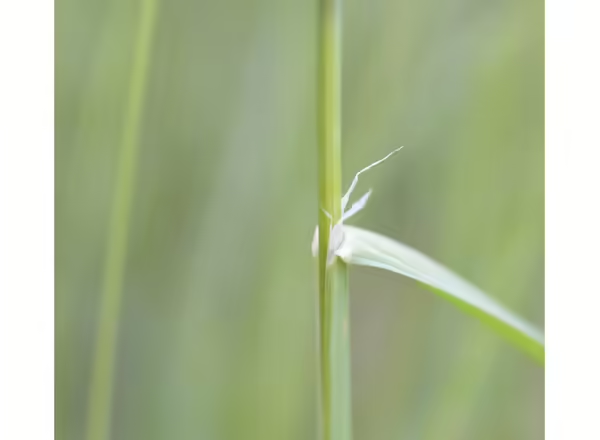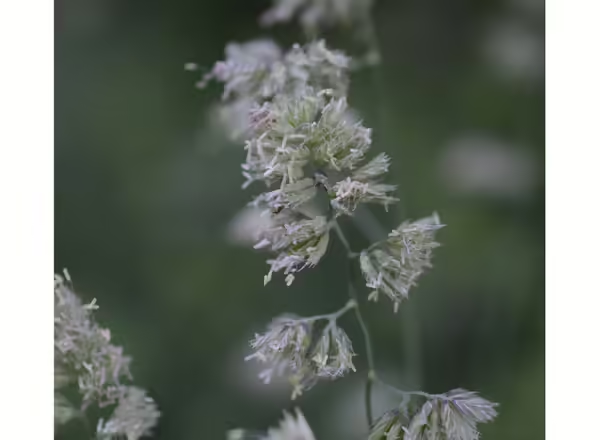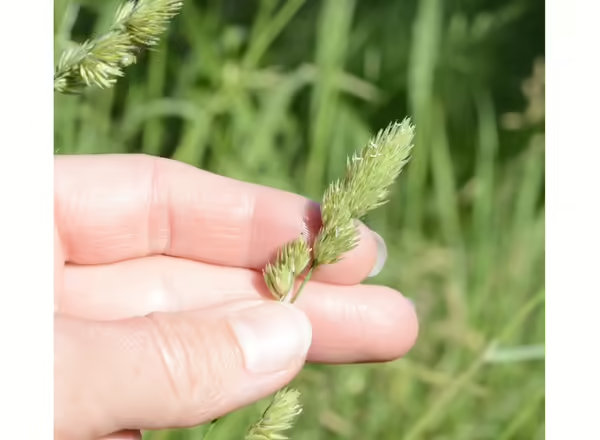A common pasture grass
In May, many cool-season grasses begin to flower, which makes them a bit easier to identify. One such grass is a European pasture and hay grass called Orchard Grass, Dactylis glomerata. This non-native grass has been used in agriculture for centuries and can persist in old fields, while also growing along roadsides and in other disturbed areas.
This grass can be found throughout Illinois. Prairie restorations on former farmland are a prime spot to find this grass.
How to identify before it flowers
Orchard Grass typically grows 3 to 4 feet tall, forming bunches. It is rhizomatous and can spread over time. Its leaves and leaf sheaths are keeled, meaning it looks like they were folded in half and retain a crease. Oftentimes the leaves found near the top of the plant are held 90 degrees away from the stem. The ligule is distinct on this grass – it is a very tall, membranous ligule, but it doesn’t stay in one piece. It often looks like it has been ripped into smaller pieces.
Taking a closer look at the flowers
Orchard Grass produces a panicle inflorescence, with branches that have clusters of spikelets near their tips, with the base and middle of the branches bare. The clusters of spikelets look fluffy or bushy. They can be green to purple in color, and the spikelets do not have awns. When mature, some of the branches of the inflorescence are held 90 degrees away from the rachis (central stem of the inflorescence).
How did it get its name?
A final note – why the name Orchard Grass? About 200 years ago, farmers in Virginia noticed that this grass grew well under the shade of the trees in their orchards and served as a forage grass, a unique combination.
Need a refresher on grass identification terms, like ligule and spikelet? Check out this blog post!






Orchard Grass, Dactylis glomerata, is a non-native cool season grass that grows in old fields, pastures, and disturbed areas. When identifying this grass, look for the open leaf sheath, as well as the tall membranous ligule. This ligule can range from white to yellow in color and what...